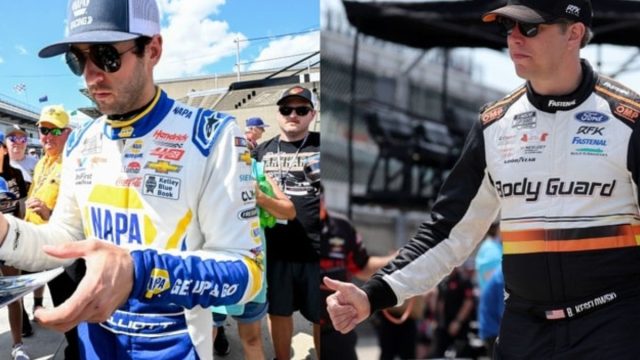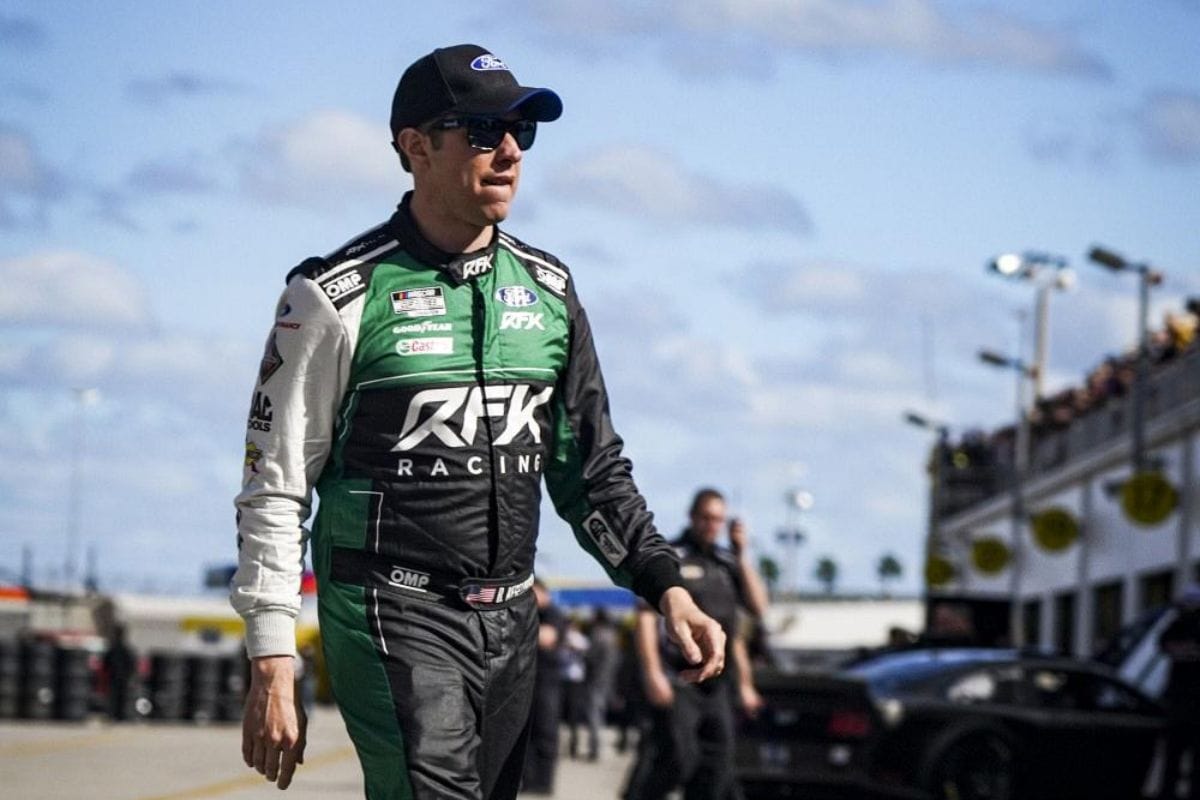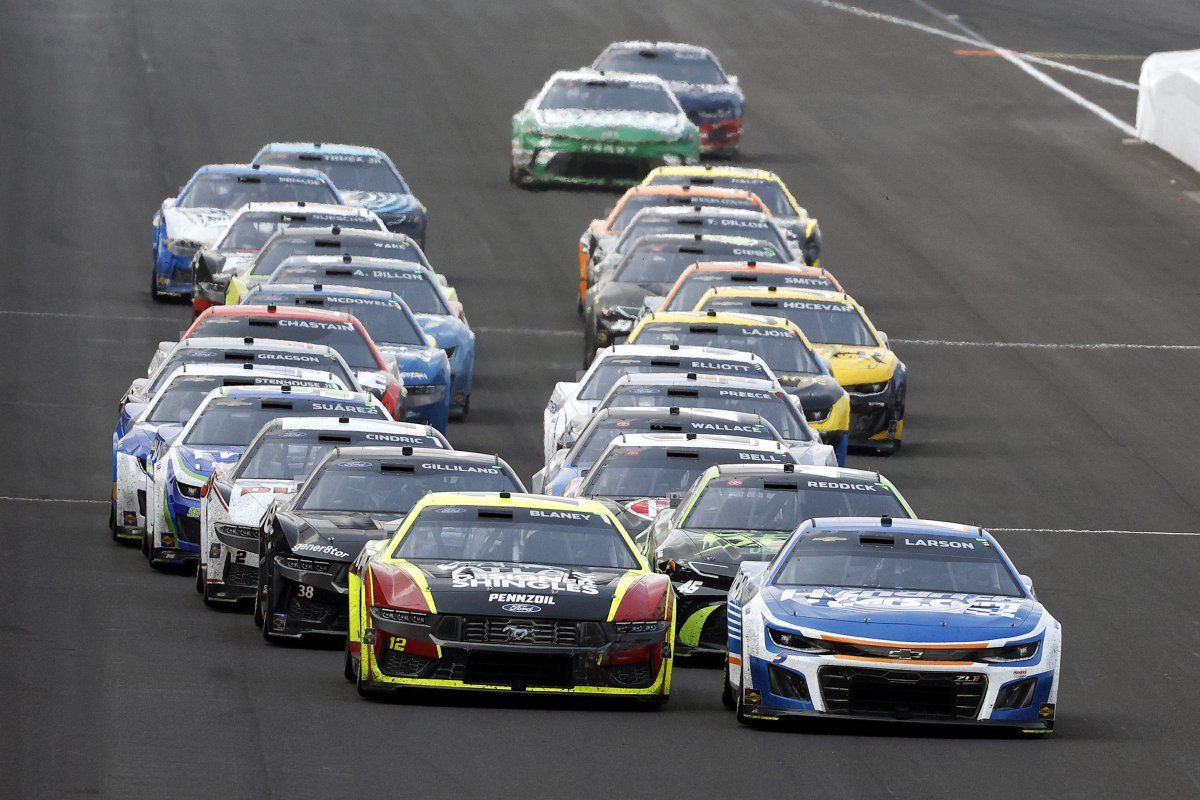NASCAR Stands Firm on Chase Elliott and Brad Keselowski: NASCAR’s steadfast stance on the penalties imposed on Chase Elliott and Brad Keselowski for their respective blend-line violations during the Indy race raises critical questions about the league’s officiating standards. While Elliott’s violation was unequivocal, Keselowski’s infraction appeared less severe, prompting discussions about the uniformity and transparency of race regulations. This situation not only highlights the complexities of enforcement but also the broader implications for driver expectations and competitive integrity. As the governing body reflects on these incidents, the potential for changes in policy and communication strategies looms large, leaving stakeholders keen for clarity.
Key Highlights
- Chase Elliott’s blend-line violation involved crossing two painted lines, leading to a clear penalty decision from NASCAR officials.
- Brad Keselowski’s minor infraction of crossing a single line raised questions about the consistency of NASCAR’s officiating standards.
- NASCAR acknowledged the gray areas in enforcement, emphasizing the need for clearer communication and explicit guidelines for drivers.
- Both drivers expressed frustration regarding the clarity and rationale behind their penalties, highlighting communication gaps in NASCAR’s rule interpretation.
Penalties for Blend-Line Violations
NASCAR’s recent penalties for blend-line violations during the race have sparked considerable discussion, highlighting the complexities and subtleties involved in enforcing racing regulations. The incidents involving Chase Elliott and Brad Keselowski serve as notable examples, as both drivers faced penalties for crossing the blend line during their pit stops. This enforcement raises questions about the clarity of rules and the interpretation of racing conduct, especially under the dynamic conditions present during a live event.
On Lap 25, Elliott’s infraction was particularly clear-cut, as his vehicle fully shifted onto the racing surface after crossing two painted white lines, a definitive breach of NASCAR’s blend-line rule. In contrast, Kyle Larson’s situation, while similar, was treated with more leniency. Larson’s minor deviation—only his right-side tires crossing a single line—was not deemed a violation, suggesting that NASCAR’s enforcement may be contingent upon the degree of infraction rather than a strict binary of compliance versus non-compliance.
Brad Keselowski’s Fuel Issue
Brad Keselowski’s tactical gamble during the race ultimately unraveled when he ran out of fuel while leading in overtime, emphasizing the critical risks associated with fuel management in high-pressure situations. As drivers push their vehicles to the limit, the balance between speed and fuel conservation becomes paramount, particularly in the closing laps of a race.
“As you look at the video, it basically says that you have to stay in the acceleration lane as you’re exiting until you exit turn 2 and then you blend up on the racetrack. Brad Moron and Wayne Alton both send additional language to clarify any confusion that may have come of the videos that at no point could you go up on the racing surface.”-(brad)
Elton Sawyer says #NASCAR will work to clean up any miscommunication on the blend line rule that bit @chaseelliott and Brad @keselowski on Sunday.
💬 "If you take the two days of green flag pit stops […] all but two (teams) got them right."
More → https://t.co/MKhd9eLXG8 pic.twitter.com/VUBkKTnzCX
— SiriusXM NASCAR Radio (Ch. 90) (@SiriusXMNASCAR) July 24, 2024
Fuel strategy is often a decisive factor in race outcomes. Keselowski’s situation serves as a case study in the complexities of race strategy, where the line between victory and failure can be razor-thin.
| Factor | Description |
|---|---|
| Race Position | Leading the race but underestimating fuel needs |
| Timing | Overtime conditions amplify fuel consumption |
| Team Strategy | Potential miscommunication on fuel management |
| Risk Assessment | High stakes led to a risky decision to push ahead |
The implications of this incident extend beyond just one driver; they serve as a reminder to all teams about the importance of precise fuel calculations and the potential repercussions of aggressive strategies. NASCAR’s unique racing environment, characterized by its blend of speed and strategy, demands that drivers and teams remain vigilant in managing their resources.
Keselowski’s Reaction
Keselowski’s reaction to the blend-line violation penalties highlighted a considerable frustration with the clarity of NASCAR’s officiating processes. His bewilderment was evident as he grappled with the rationale behind the penalties imposed on him and Chase Elliott. Keselowski articulated a profound sense of confusion, remarking that he did not comprehend the basis for the sanction. This lack of understanding is particularly concerning, as it emphasizes a potential gap in communication and rule interpretation between NASCAR officials and competitors.
In a bid to clarify the situation, Keselowski requested his team to revisit the relevant rule, illustrating his commitment to comprehending the intricacies of NASCAR’s regulations.
This incident raises critical questions about the transparency and accessibility of NASCAR’s officiating framework. If drivers cannot easily understand the rules that govern their actions on the track, the integrity of the sport may be called into question.
“So we felt that we were in a pretty good place.Obviously, communication is something that we pride ourselves on, and want to make sure our teams and drivers all understand, our fans understand, any nuances, if you will, around a particular venue that is different. We didn’t get a lot of questions back on the information that went out to the teams, so we felt like we were in a pretty good place.”-(brad)
Keselowski’s reaction serves as a call for NASCAR to improve communication and provide clearer guidelines, ensuring that all participants are uniformly informed and that the officiating process is both transparent and reliable. Such improvements are crucial for fostering trust within the racing community.
Elliott’s Frustration
Chase Elliott’s response to the penalties reflects a similar discontent with the clarity of NASCAR’s rules and the enforcement process, emphasizing a growing sentiment of frustration among drivers concerning the consistency of officiating decisions.
Elliott articulated his feelings openly, questioning the rationale behind the penalties levied against him. His remarks, particularly the emphatic “That’s not right,” reveal a deeper unease with how rules are interpreted and applied during races.
“That’s not right. I did exactly what the f***ing sheet said to do. […] I mean what the f***?! … I do exactly what they f***ing tell us to do. They didn’t say line, they said racing surface, so you tell me how the f*** I was on the racing surface.”-(chase)
Both Brad Keselowski and Chase Elliott had challenging races, ultimately finishing the Brickyard 400 in 21st and tenth places, respectively. While Elliott is currently second in the Cup Series standings with 739 points, Keselowski is ninth with 615 points.
In consideration of Elliott’s statements, several key themes emerge:
- Clarity of Rules: There is a pressing need for more explicit guidelines that leave little room for interpretation, particularly concerning what constitutes the ‘racing surface.’
- Consistency in Officiating: Drivers expect uniformity in how rules are enforced across the board, ensuring that all competitors are held to the same standards.
- Driver Communication: Effective dialogue between NASCAR officials and drivers is essential for maintaining trust and understanding, which can mitigate frustrations arising from contentious calls.
Final Race Results and Standings
The recent Brickyard 400 emphasized the varying levels of performance among top competitors, with Chase Elliott securing a solid 10th place finish and Brad Keselowski facing difficulties that led him to finish 21st.
Elliott’s ability to navigate through the complexities of the race highlighted his resilience and skill, solidifying his position as a formidable contender in the Cup Series. His current standing, second in total with 739 points, reflects a consistent performance throughout the season, characterized by tactical racing and adaptability to challenging conditions.
Keselowski’s struggles during the Brickyard 400 not only cost him valuable points but also raised questions about his team’s strategy and execution. Finishing 21st, he now sits ninth in the standings with 615 points, a considerable gap that could impact his playoff positioning as the season progresses.
The disparity in their finishes at Indianapolis serves as a reminder of the unpredictable nature of the sport, where even the most seasoned drivers can encounter setbacks.
As the Cup Series moves forward, both drivers will need to recalibrate their approaches. For Elliott, maintaining momentum will be vital, while Keselowski must identify the underlying issues that have hindered his performance. The championship landscape continues to evolve, making each race an opportunity to gain both points and insights into the competition.
News in Brief: NASCAR Stands Firm on Chase Elliott and Brad Keselowski
The penalties imposed on Chase Elliott and Brad Keselowski highlight ongoing challenges in NASCAR’s officiating consistency.
While the league emphasizes the importance of adhering to established guidelines, the differing severity of the violations raises questions about equitable enforcement.
The necessity for clearer communication and defined standards emerges as a significant issue for maintaining competitive integrity.
As the league navigates these complexities, the resolution of such discrepancies will be essential for fostering trust among drivers and fans similarly.
ALSO READ: Dale Jr. Criticizes NASCAR for Chase Elliott’s Penalty at Indianapolis Motor Speedway



